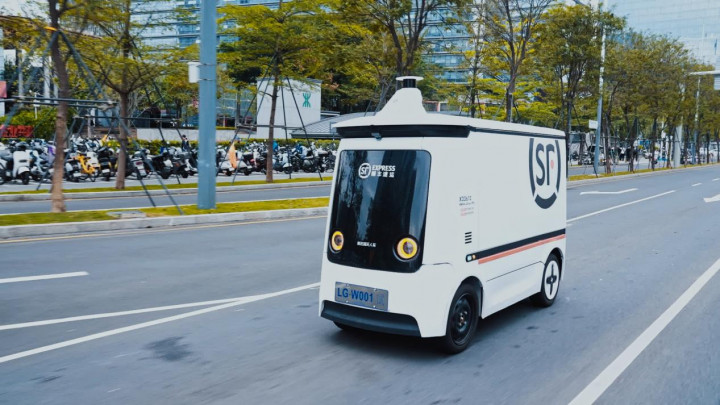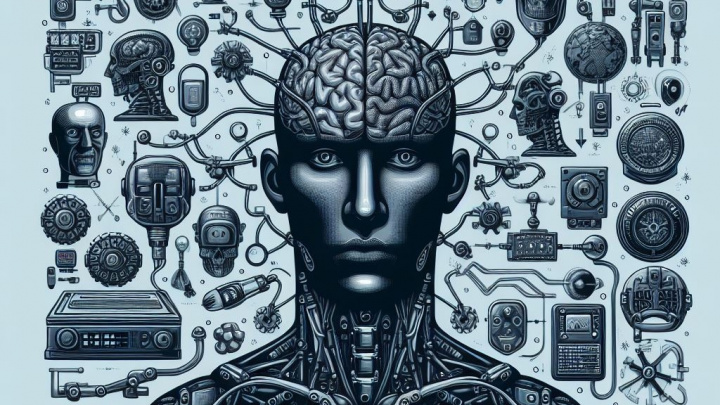Self-Driving Offensive: Shenzhen, the Future City of the Driverless Revolution
Shenzhen, China's premier technology hub, is spearheading the autonomous vehicle revolution. But this isn't just about futuristic robotaxis. The city is aggressively deploying autonomous technology to boost core industries and fundamentally redesign urban services, from logistics to public sanitation.

I delve into Shenzhen's strategy, exploring its practical applications, the national ambitions driving them, and the critical role of artificial intelligence in making it all possible.
A Champion of Practical Application: Logistics and Urban Services
In Shenzhen, autonomous vehicles are already part of the urban fabric. The city has opened up routes across ten districts for driverless commercial delivery, creating the foundation for a city-wide intelligent distribution network. SF Express, a logistics giant headquartered in the city, has deployed a fleet of 80 autonomous vehicles across several districts. These vehicles can handle shipments containing up to 300 individual orders at once, boosting delivery efficiency by 20%. During this year's massive "618" e-commerce festival, the company's autonomous fleet managed an impressive 80,000 deliveries per day.
The innovation doesn't stop with packages. In the Longgang district, four autonomous sanitation vehicles are now in operation, collecting 300-400 bags of waste daily. This pilot program has a dual purpose: it aims to improve road safety while also protecting an aging sanitation workforce from the hazards of street-level work.
China's Broader Autonomous Strategy
Shenzhen's progress is a key part of China's ambitious national strategy to establish autonomous vehicles as a new engine for economic growth. At least 19 Chinese cities are currently running trials for robotaxis and autonomous buses. Beijing, the nation's capital, has implemented new regulations to promote the technology, paving the way for fully driverless buses and taxis.
While pushing for rapid development, the government is also tightening its focus on safety. China's Ministry of Industry and Information Technology (MIIT) has recently introduced stricter rules. New vehicles must include non-disengageable driver monitoring systems. Unsupervised features like remote parking and one-button "summon" functions have been banned. Furthermore, public beta testing programs have been curtailed, and safety-critical over-the-air (OTA) software updates must now be handled with the same rigor as official vehicle recalls.
The Driving Force: Artificial Intelligence
The rapid advancement of autonomous transport would be impossible without Artificial Intelligence. AI serves as the brain of the vehicle, enabling it to perceive its environment, interpret complex traffic scenarios, and make safe, real-time decisions. The development process hinges on three key stages:
-
AI Training: Neural networks are trained on vast datasets to recognize objects, traffic signals, and countless road patterns.
-
Simulation: The trained models are rigorously tested in virtual environments. This allows developers to safely simulate rare or hazardous "edge cases," such as extreme weather or unexpected obstacles.
-
Real-time Operation: Onboard computers process data from a suite of sensors—including cameras, LiDAR, and radar—to navigate and control the vehicle in the real world.
Beyond navigation, AI is crucial for efficiency. It optimizes acceleration, braking, and route planning to reduce energy consumption and emissions. The industry is moving fast; according to one report, 26% of automotive organizations are already using generative AI to accelerate the development of autonomous vehicle systems.
Challenges and the Road Ahead
The widespread adoption of autonomous vehicles still faces significant hurdles. The technology must prove its reliability in extreme conditions, and public trust must be earned over time. Furthermore, critical questions regarding infrastructure (like ubiquitous 5G and high-definition maps) and legal frameworks (especially concerning liability in the event of an accident) remain to be solved.
However, Shenzhen's example clearly demonstrates that the autonomous revolution is about much more than the convenience of a robotaxi. It offers a blueprint for a future where intelligent technology is woven into every aspect of urban life, creating cities that are potentially safer, more efficient, and more sustainable. The road ahead is long, but Shenzhen's bold and deliberate steps are paving the way for the autonomous cities of tomorrow.
References
-
China Daily Hong Kong. (2025, July 11). Shenzhen uses self-driving to boost industries, enhance urban services.
-
Council, Forbes Technology. (2024, May 22). The Role Of AI In The Autonomous Vehicle Revolution. Forbes.
-
Pandaily. (2024, April 1). Beijing Rolls Out New Self-Driving Regulations.
-
CN EV Post. (2024, June 4). China to regulate OTA updates for cars, to be handled as recalls if safety-related.





